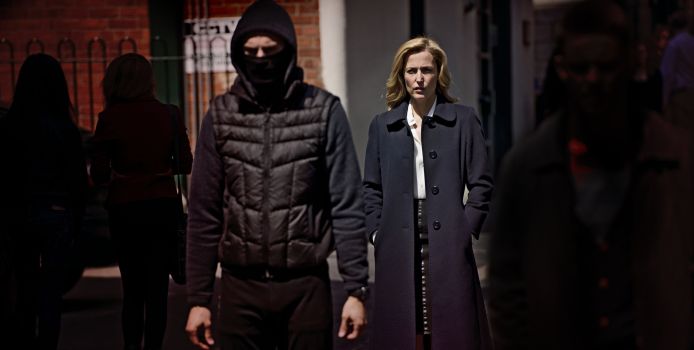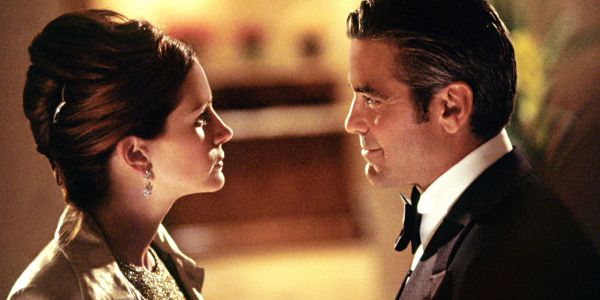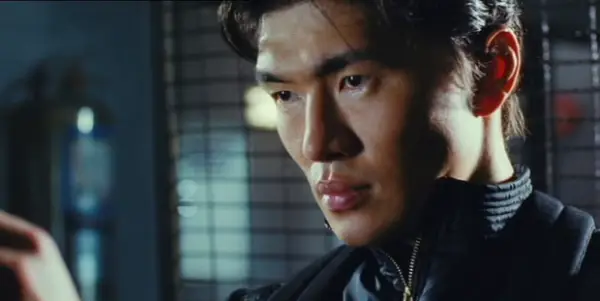The Bad Are Ugly: On Profiling Criminals in Hollywood

Manon de Reeper is the founder and CEO of Film…
I was watching the North Irish TV show The Fall a while ago and it struck me how handsome Jamie Dornan is, and how fascinating it is that the creators of the show cast him for the role of the sexual predator and serial killer, the villain of the story. In typical crime films and TV, the average sexual predator is portrayed to be a pretty average if not ugly guy, around or older than 40, and if he’s fat, he preferably has a constant sheen of sweat over his forehead. Someone who kind of grosses you out. True Detective‘s incestuous Erroll is the perfect example. Gross, fat and uncomfortably indecent.

When it’s not a rapist or sexual deviant, but an average criminal out to destroy the world (America), it’s often a foreigner. Just look at the average action film. The foreigner of choice often correlates with current fears in society: when African Americans posed the biggest threat to American society, the villain was often black. Remarkably, even though the Germans haven’t been a threat for many decades, they are still a popular choice for the villain. Frequently, too, an Asian is the adversary, preferably from a communist country. Currently trending is the (vaguely) Middle Eastern terrorist. Of course, in most cases, it’s a white male who is to overcome the foreign threat, and who ends up saving the day. I’m sure you can think of plenty examples.
However, when it’s the criminal who is the hero of the movie, the actors cast are often more handsome, and definitely much more suave. Just look at George Clooney in the Ocean’s franchise, or Brad Pitt as Tyler Durden in Fight Club, who we’re led to admire by The Narrator. Look at the average mafia film: charming, good-looking Italian guys (the epitome, of course, being Robert DeNiro). You could even consider Idris Elba‘s Stringer Bell in The Wire an example – the gorgeous (and definitely suave) mastermind who we’re to feel sad about when he -spoiler- dies. These are the guys we’re supposed to cheer on, and their handsomeness occasionally even helps them get away with their crimes.
The Criminal’s Physical Anomalies
Most of us will never get in touch with the criminal justice system. Our knowledge of that system mostly consists of what Hollywood and other pop culture (including the news) has taught us. They’re our “window into the world” – we’re watching crime and drama from a safe distance. Film unconsciously shapes our perceptions of society, and those unconscious perceptions in turn shape film. It’s a vicious circle.

In this particular case, the profiling of the criminal in film all ties back to our general perception of “the criminal”. That unconscious perception is that you can determine someone’s criminality by what someone looks like. The first to identify this concept was a famous Italian criminologist, Cesare Lombroso, in the late nineteenth century. He theorized that some people are “born” criminal, and that by studying physical anomalies, you could distinguish a criminal from a noncriminal. The criminal was inherently savage, thus, when someone’s features were more like that of an ape or neanderthal, they were destined to be more criminal.
During Lombroso’s life, his theories were disapproved throughout Europe, however, they were very popular in the United States, where sociologists were eagerly studying criminals – naturally, Lombroso’s theories fit in seamlessly with the ideas of lower classes and other races being more prone to criminality. Today, Lombroso’s theories have long been disproved. Numerous other theories have been developed to explain the cause of crime and criminality (if you’re interested, look into the broken windows theory, or criminalization, or the labeling theory – there are many more). All are a lot more viable than Lombroso’s theories.
So obviously outdated, yet still so current
Nonetheless, it appears that even to this day, the idea that you can determine by how someone looks whether he is a criminal, persists. The notion is still reinforced time after time, whenever we watch film that presents a conventionally ugly criminal, or when we are subjected to mug shots or photos of line-ups in the news: pick out the criminal, please.
In reality, criminals don’t look criminal. There are no defining elements of a face or body through which we can determine someone’s criminality. Sure, laugh at me for pointing it out, because it sounds so obvious. Yet, a disproportionate amount of minorities, latinos and blacks, make up the American prison population. Make of that what you will.

While we now laugh at Gall’s concept of phrenology, where bumps on or the circumference of the human skull could predict psychological attributes like intelligence or mathematical ability, it was a widely accepted theory at some point in history. Hopefully, there will be a time in the future where we’re as aware of the foolishness of determining someone’s intelligence by the bumps on their skull, as the foolishness of determining someone’s criminality by the way they look.
After all, it is an unconscious process: you can’t change it unless you’re aware of it. So, next time you watch a crime film or TV show, take an extra look at the criminal and don’t take him at face value.
Let’s discuss – and feel free to disagree with me.
Have you ever paid attention to how criminals and villains are presented in film? Do you agree that it’s symptomatic of a larger societal problem where we decide who are criminal based on what they look like?
I’ve pointedly ignored them above, but what about female villains?
Share your thoughts below!
(top image: The Fall – source: BBC Two)
Does content like this matter to you?
Become a Member and support film journalism. Unlock access to all of Film Inquiry`s great articles. Join a community of like-minded readers who are passionate about cinema - get access to our private members Network, give back to independent filmmakers, and more.
Manon de Reeper is the founder and CEO of Film Inquiry, and a screenwriter/producer. Her directorial debut, a horror short film, is forthcoming in 2021.













